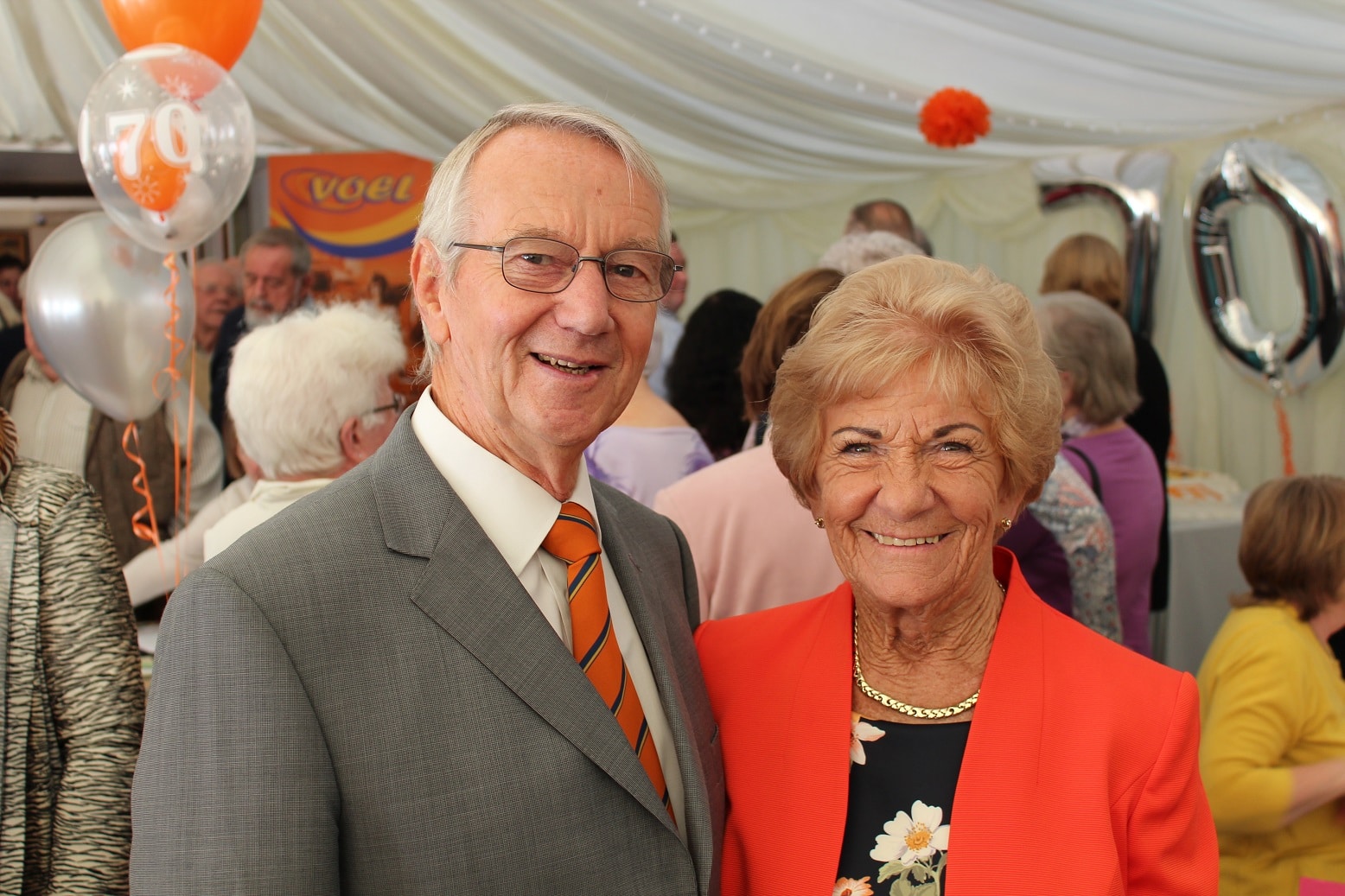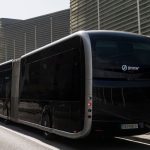Long-distance touring work is the target for Volvo’s super-high 9900 coach in the UK and Irish markets. Does it suit that application? We put the right-hand drive prototype through a Test Drive to find out
Volvo is targeting the top of the market with the 9900 integral, which made its global debut in right-hand drive form. An undulating window line places it among the most distinctive coaches on the road, and the UK and Irish dealership reports strong interest from buyers
It replaces the 9700 as Volvo’s range-topping option here. As befits a coach in that category, it comes with a host of equipment as standard and much else that is optional.
9900s for the UK and Ireland will come only in tri-axle form. The first coach is 13.9m long, but a 13.1m variant is also available. 57 and 53 seats are fitted respectively, but the toilet is demountable and an additional loose seat pair is provided.
The first production 9900s for the UK and Ireland will be delivered soon, and one is planned to appear at the UK Coach Rally in Blackpool on 6-7 April.
To suit its nature as a tourer, the 9900 has cinema-style seating. Volvo has ensured that views are as good as can be and the driver is also well looked after, with a high-specification cab and excellent visibility.
Extensive customisation is possible. A notable development from the previous-model 9700 is that a rear kitchen can be added; the outgoing coach had insufficient headroom to do so, but at 3.85m tall, that is no such issue for the 9900.
The first coach is regarded as a prototype, and some minor elements will differ on production examples. Nevertheless, it gives an excellent idea of what the range offers. routeone is the first publication to put the 9900 through a formal Test Drive.
Building blocks
Power is from the 10.8-litre D11K engine developing 460bhp and 2,200Nm of torque. That is harnessed by the 12-speed I-Shift automated manual gearbox. No fully-automatic option is available in view of the coach’s likely use as a long-distance tourer.
A 600-litre fuel tank is above the front axle, with twin filling points. AdBlue storage is at the rear nearside, immediately ahead of the radiator.
As with all Volvo coaches, the 9900 has I-Start. It uses separate batteries for auxiliaries and for the starter motor to mandate against non-starts.
Alcoa Dura-Bright alloy wheels are fitted and a spare is beneath the platform. Tyre size on the prototype is 295/80 R22.5, but on production models width will grow to 315mm.
The front dash panel is easily accessed via an external release catch, and the washer bottle is located beneath it.
The prototype 9900 has a crew compartment ahead of the drive axle, but that will not be standard; space will instead be used for luggage. As fitted, the bunk area has a heater, a light and a handset to communicate with the outside world.
Locker doors are of the manually operated, parallel lift type. No powered option is available. Production 9900s will have a two-handle arrangement on each panel; the test coach has just one.
Full-width ski lockers are fitted over the rear bogie. Cantrail lighting can be added as an option. Total underfloor luggage capacity without the crew compartment is approximately 13.1m3.
A comfortable tourer
Entry is via four steps to the platform and two more to the gangway. Although the aisle is at a constant height, the seating platforms rise steadily to create the cinema-style layout, and hence the step to the rearmost row of seats is quite steep.
Lighting is handled well. Blue LEDs are fitted in both the step edges and within the ceiling, while the latter also has white light; when the door is closed its intensity is muted, but when it is open the level of illumination increases. The passenger service units are all-new.
A 32kW air-conditioning unit is fitted, along with perimeter radiators and a Webasto auxiliary heater. The driver sets the desired temperature and the control unit does the rest.
Seats in the prototype are to the highest specification available. They are half-leather with a moquette centre, and Volvo has an extensive sample collection at its Coventry sales centre to allow buyers to choose their own colour combination.
Fitted as standard to the top-level seats are side flaps, USB charging points, drop-down tables, magazine nets, footrests and lateral displacement. The tables are to a design that uses extended arms, but Volvo expects that an alternative, more conventional arrangement will be more popular.
The recline arrangement is unusual. As the seat back tilts, the squab moves forwards and lifts slightly.
Comments have been made about the 9900’s glazing arrangement, which is made up of several different-sized panes. Closer examination shows that the pillar spacing is ideal, because none of them intrude on the side view from any seat. Instead, they all line up perfectly.
No DVD player is fitted as standard, although the coach does come with twin folding monitors and a Bosch system with a USB input. The idea is that content will be streamed directly via that, although a DVD head unit can be fitted if required. Atop the centre toilet is a small yet neat servery that has been custom-designed by AD Coach Systems. It is to a granite-style finish.
For the driver
The cab has Volvo’s customary chunky rocker switches. A one-piece powered windscreen blind is fitted and the manufacturer has been careful to ensure that only a small part of it is solid. The remainder uses mesh to maximise forward views.
A further, manual, blind is above the powered signalling window. No péage opening is fitted, but it will be added to production coaches. The windscreen is heated, which is an optional fitment.
Adjustment of the Isringhausen seat is good, and it swivels to around 45o to aid access. That is useful in view of the location of the I-Shift selector to the driver’s left.
Two USB charging points are beneath the signalling window and the driver has their own heater radiator, complete with a rotary control valve. A safe is well-hidden adjacent to the door, and various storage areas are dotted around the cab.
Within the dash is a heads-up display as part of the driver support system. If a frontal collision is detected as imminent, an audible indication is issued. Then, the heads-up display projects a warning onto the windscreen. If that is ignored, the brakes activate.
The gullwing mirrors are complemented by a lower offside pane, which is specific to right-hand drive 9900s.
On the road
The 9900 promises much from a driving perspective, and it does not disappoint. Visibility is excellent thanks to narrow, pulled-back A-pillars, and the scope of adjustment for both the seat and the steering wheel ensures a comfortable position.
Independent front suspension, an actively-steered tag axle and a low centre of gravity thanks to a lighter roof structure means that the coach holds the road well regardless of speed. Crosswinds are almost unnoticeable, something that is aided by a slight lowering of ride height at 50mph. Also helping stability is Volvo Dynamic Steering (VDS). In the prototype it is enabled, but in production coaches it can be disabled by the dealer if preferred.
When active, no shocks travel upwards via the steering column, and the effort required at low speeds is much reduced. However, VDS does take a little getting used to. The wheel self-centres more rapidly than it otherwise would, and that makes negotiating roundabouts something to be careful about for drivers not familiar with the system.
The D11K has plenty of power and progress is made rapidly. Top gear is selected at around 50mph, but under some circumstances 11th is held at that speed.
At 60mph around 1,350rpm is displayed; like-for-like that is higher than some other coaches with high-torque engines, but it gives excellent flexibility at motorway speeds. In particular, when clear of a HGV the 9900 accelerates from 56mph quickly in top gear.
A reversing camera feeds to an integral dash screen, and parking sensors are fitted at the rear. For a coach of its size the 9900 is easy to drive. Doing so is also very relaxing.
The prototype has GPS-based topographical awareness as part of the optional I-See, optimising how climbs are tackled to deliver the best fuel consumption. Eco-Roll can also be specified, which selects neutral on some downhill sections for the same reason, but the prototype does not have it.
A touring challenger?
The 9900 ticks the boxes that are required of a top-spec tourer. Passengers’ needs have been considered during design and the travelling environment is excellent. Visibility is good and noise levels within the saloon are low; the seats are also very comfortable.
Drivers will struggle to find anything to complain about, and they too have been thought of by the manufacturer. The cab is comfortable and quiet and again, visibility is excellent.
At 13.9m, retail pricing for the 9900 starts at £295,000. When paying that, buyers will expect to be served well by both the coach and the supplier. Volvo has taken spares supply into account, and it says that components for the 9900 can be ordered through, and supplied to, local dealerships on a next-day basis.
It can also provide the 9900 on a lease package, and for an additional charge it can add up to five years’ comprehensive repair and maintenance support, delivered via 90 dealers with coach and bus coverage. Volvo will hold stock 9900s at Coventry, although none are likely to arrive for at least six months. In the meantime, build slots at the WrocÅ‚aw factory in Poland for right-hand drive models are all spoken for.
The 9900 is a distinctively-styled super-high coach. Its signature window line is not something that is seen on any other model; it may look unusual, but when it is examined closely the reason for it becomes more obvious. It is well thought out, as is much else on the coach. Volumes are never huge in the 9900’s segment, but it will be a strong contender.
Facts and figures
Retail price: £295,000
Engine: 10.8-litre six-cylinder Volvo D11K
Power: 339kW (460bhp) @1,800rpm
Torque: 2,200Nm @1,000-1,400rpm
Emissions: Euro 6 using EGR and SCR
Gearbox: Volvo I-Shift 12-speed automated manual
Tyres: 295/80 R22.5 (production coaches will be 315/80 R22.5)
Length: 13.99m
Height: 3.85m
Width: 2.55m
Wheelbase (axles 1-2): 6.86m
GVW: 24,750kg
UVW: 16,348kg
Fuel economy: 10.4mpg


























